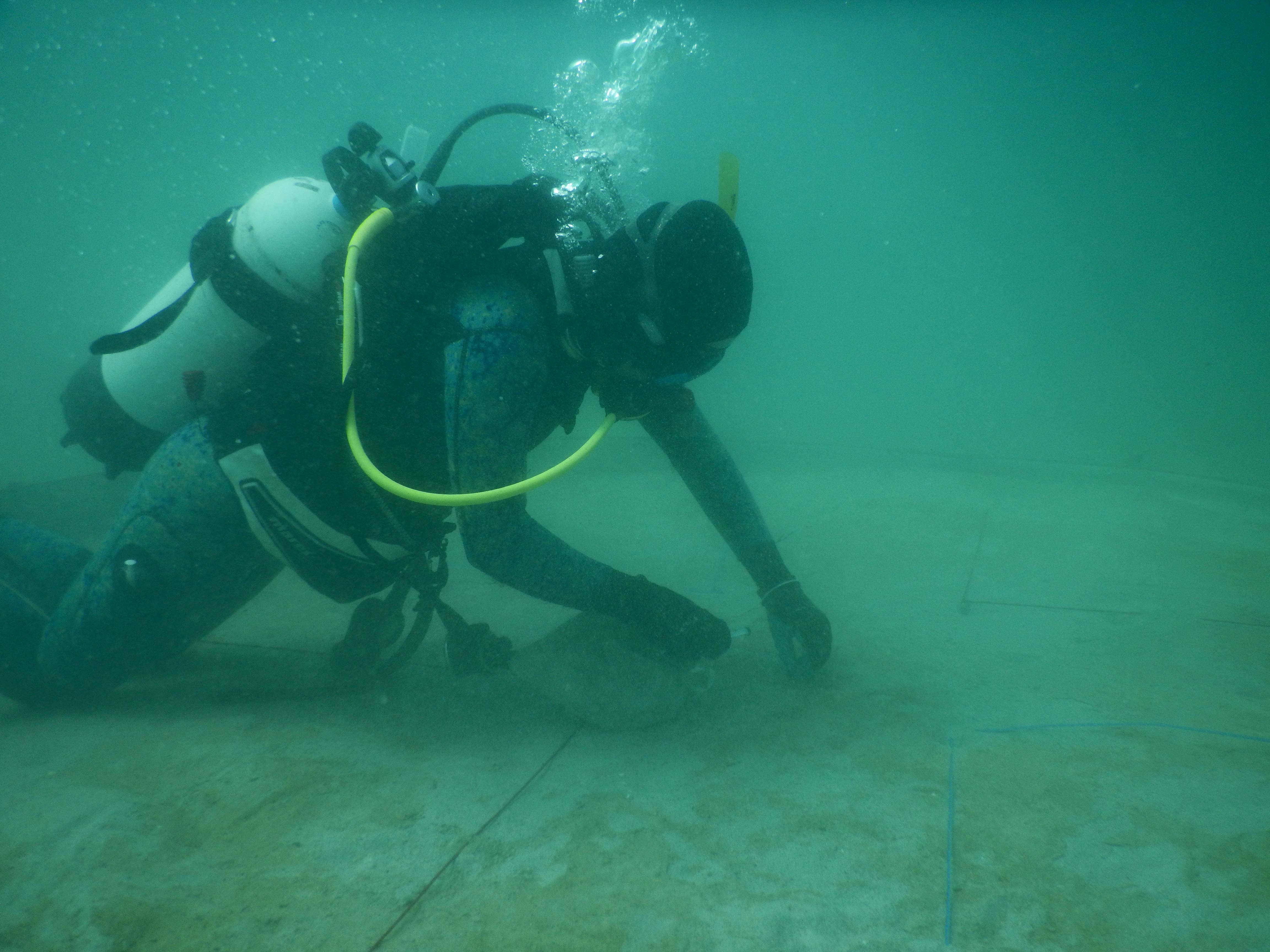Researchers and commercial divers have created underwater garden beds in Cockburn Sound, using dredged sediment from a nearby area, as part of a project aimed at improving the survival rates of transplanted seagrass.
“We want to see whether sediment manipulation and addition is going to help the seagrass grow and whether there are better ways to develop new underwater meadows.”
Dr Giulia Ferretto, UWA School of Biological Sciences
About 80 per cent of the Sound’s seagrass meadows were wiped out by the 1970s because of excessive nutrient discharge and they have struggled to recover.
Capping existing seabed sediment, which contains residual nutrient contamination, is seen as a potential solution.
The project, involving researchers from The University of Western Australia and Murdoch University, is part of the Western Australian Marine Science Institution Westport Marine Science Program.
 Image: Diver Madelaine Langley taking samples from the recently added sediment. Picture by Dr Giulia Ferretto
Image: Diver Madelaine Langley taking samples from the recently added sediment. Picture by Dr Giulia Ferretto
Seagrass researcher Dr Giulia Ferretto, from UWA’s School of Biological Sciences, said the project had been a big undertaking and involved many months of planning to organise a barge, large bags of sediment from Cockburn Cement’s dredging operation and divers who could set up the gardens.
“We used a small barge to take 15 garden bed rings out to the site in Cockburn Sound, then commercial divers fixed them on the seafloor,” Dr Ferretto said.
“The barge also carried out tonnes of dredge spoil in 700-kilogram bags and a hoist helped lower the contents into the water.”
Dr Ferretto said capping the existing nutrient rich sediment with new dredged material may be a solution to a problem that’s hampered restoration attempts.
“We are going to compare the health and survival of seagrass sprigs planted in existing sediment to those planted in the dredged material,” she said.
“We have mixed a controlled amount of organic seagrass wrack into some of the dredged sediment to see if that natural ‘compost’ also makes a difference.
“We want to see whether sediment manipulation and addition is going to help the seagrass grow and whether there are better ways to develop new underwater meadows.”
Dr Ferretto said it was like gardening but more complicated underwater.
“Once the beds were put in place, divers raked the sediment and then dug small trenches to plant the seagrass sprigs,” she said.
Henry Evans, a research assistant at Murdoch University, said seagrasses were a vital part of the Cockburn Sound ecosystem and helped to stabilise sediment and provide food and habitat for marine fauna.
“If the addition of dredge spoil is shown to improve sediment conditions for seagrass, then we would be able to increase the survivability of future restoration efforts as well as expand the area that is suitable for seagrass restoration in Cockburn Sound,” Mr Evans said.
The seagrass shoots were planted in September and scientific divers will check them at regular intervals.
Media references
Cecile O’Connor - Communications Manager – WAMSI 6488 4574
